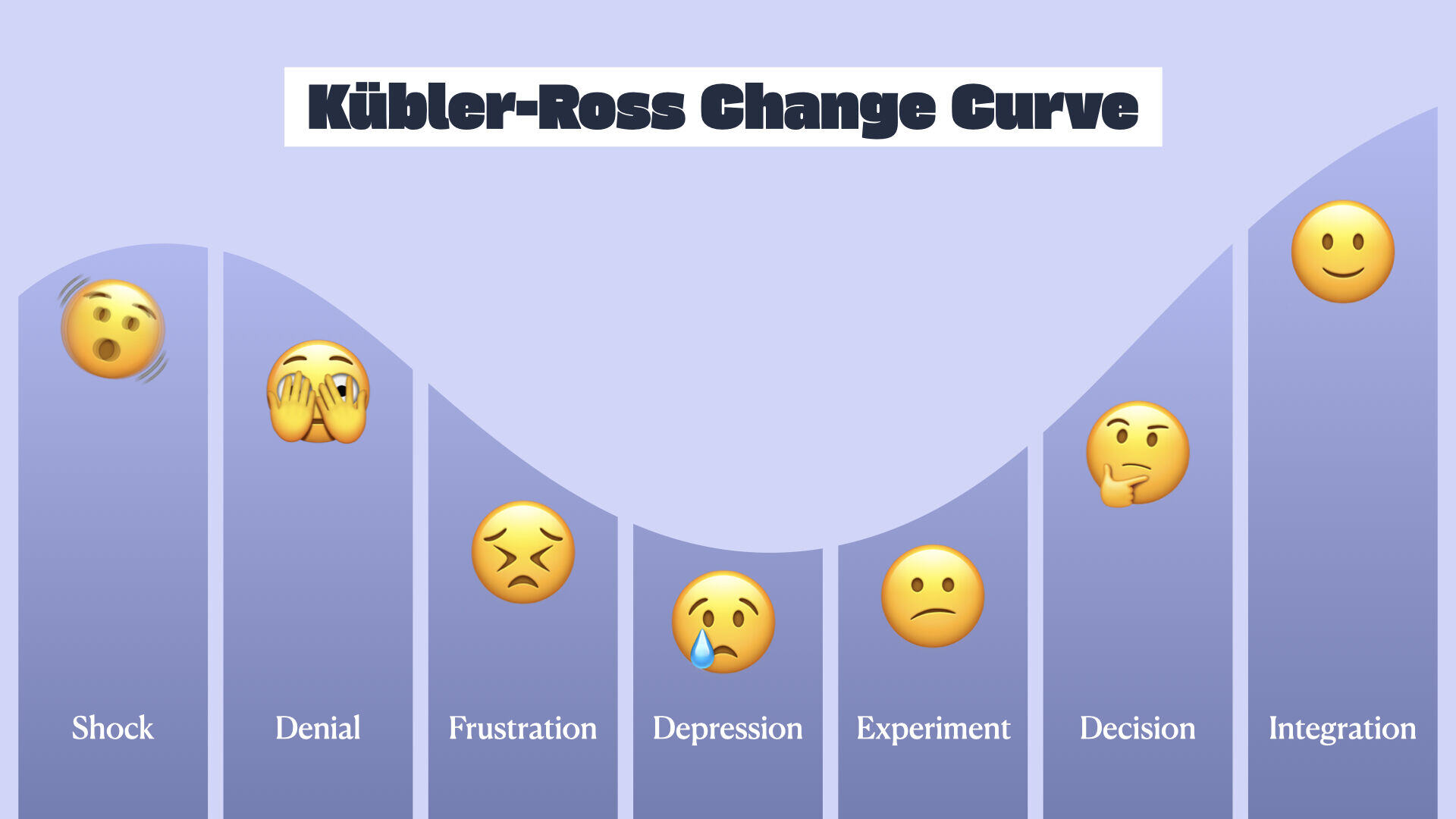
In this edition of The Handbook newsletter, I wanted to get deeper into Change Management – something all of us face as our companies grow and evolve.
As an Ops Director, I had to deal with change regularly. Refining best practice, making decisions on team structure, and considering our tools.
The most challenging part? Getting people on board.
People hate change. It’s disruptive, it’s scary, and it’s unsettling.
Check out the model below – originally created to describe the grief cycle. Now widely used in the business world to describe emotions people go through when dealing with change. The same emotions as grieving! That’s heavy.

We can’t change how people feel, but we can support our teams in moving more comfortably towards the “integration” phase.
In my experience communication is key.
Here’s the checklist I followed for communicating change:
- What we’re changing and why
- What’s in it for each team member
- How things will change
- Who’s there to support and how
- When the cut-off point is
- What’s in it for each team member (yes, it’s in this list twice intentionally)
And the most important part – we shared this information regularly, in various channels, coming from different people – ranging from the MD, to Finance, myself in Ops, and team leads.
One reason we created change was because work was being done inconsistently. There was also a lack of financial understanding and accountability when it came to project delivery.
Alongside a platform change, this required a big education piece for the team on finances “what’s a purchase order and why do we need one?”, and best practice “no, you can’t copy and paste that person’s quote any longer” and “yes, we all need to track our time”.
We explained our reasons for change – a growing company needs standardized ways of working and insights on performance. We shared the desired outcome – greater efficiency, less over-servicing, and higher profits. And the benefits for individuals – higher profits means improved perks – better training, better team events, and better compensation.
During implementation we updated the team regularly on the progress and next steps. Between each team lead, we gave people plenty of notice and reminders. We ensured everyone knew where to find information during and after training.
Once we went live, we encouraged feedback – so we could make changes and address concerns. We celebrated wins and shared their impact – “look what we can see now that we couldn’t before”.
In a recent episode of The Handbook: The Agency Operations Podcast, I discussed change management with Claire Quansah.
In this episode, we covered everything from planning and prep; implementation; testing workflows; documentation, training and support; and continuous improvement.
We also talked about how celebrating wins encourages individuals and champions. And how these champions can help support and motivate the rest of the team through change.
You can watch 6 steps to successful change management on YouTube or listen wherever you get your podcasts.
If you ever want to chat about what worked well for me when implementing change, reach out to me on LinkedIn.
Until next time,
Harv Nagra
Ops consultant & former agency ops director




